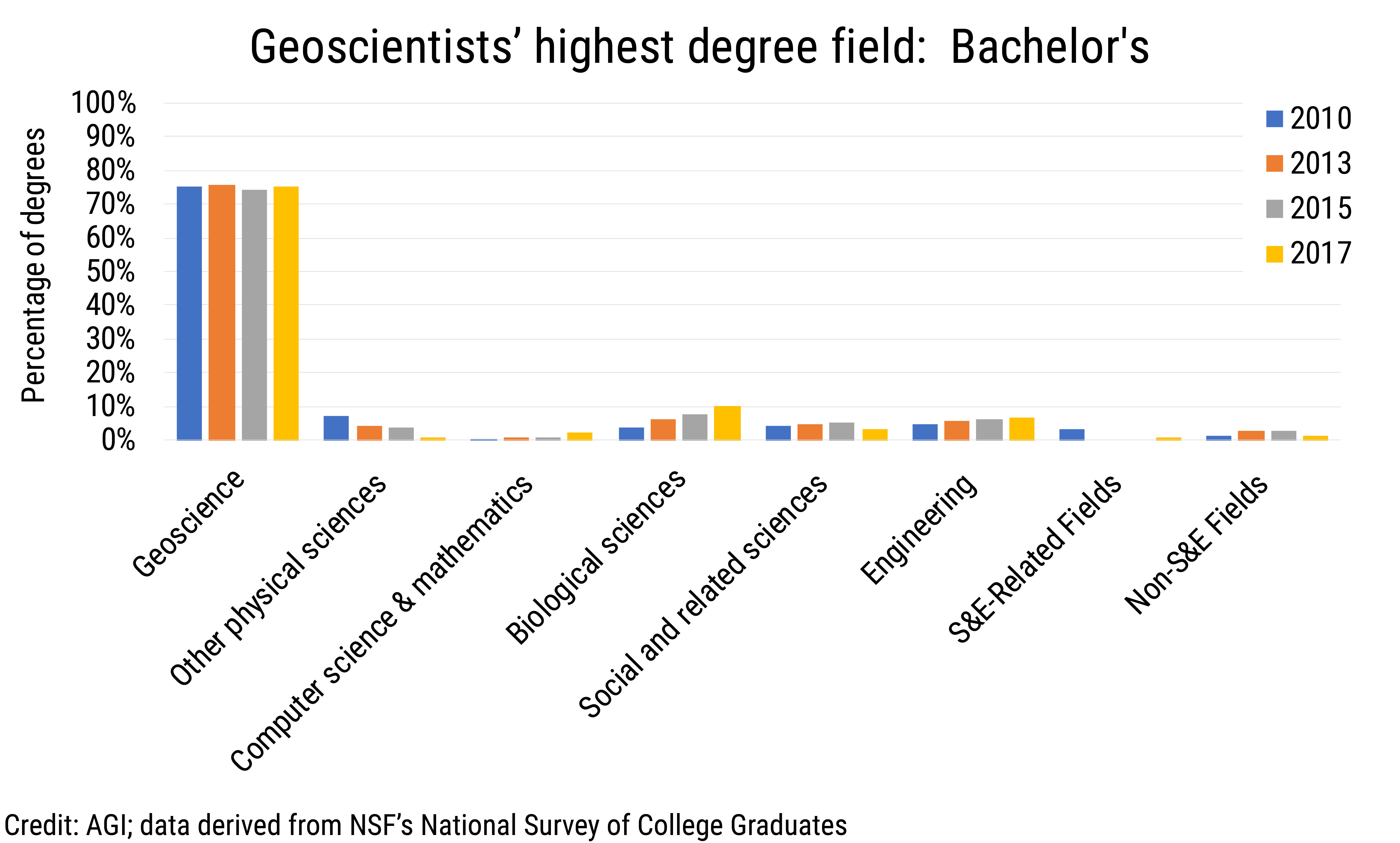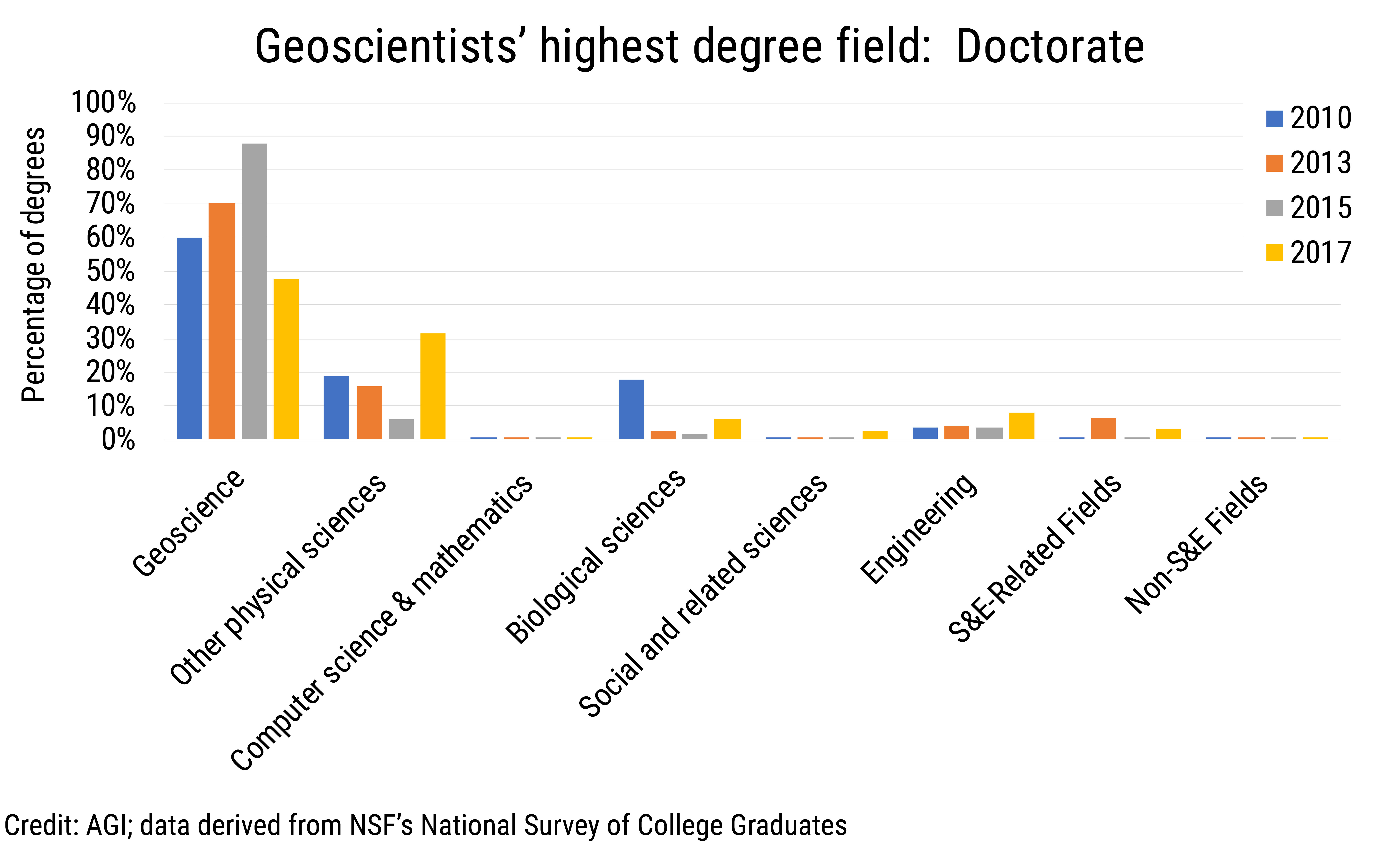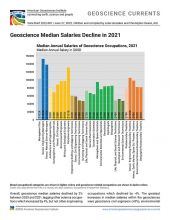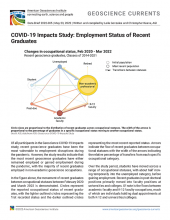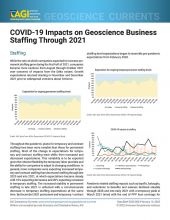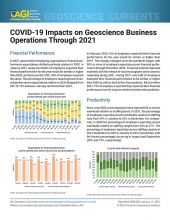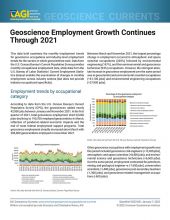Geoscientists work across many fields studying the interior and surface of the Earth, oceans, atmosphere, and the processes that impact these areas to provide solutions for issues that intersect society and earth systems. Data from the National Science Foundation’s National Survey of College Graduates allows for examination of the highest degree field of working geoscientists to better understand their educational backgrounds.
Although most geoscientists have their highest degree within the field of geosciences, approximately one-quarter do not. The percentage of geoscientists whose highest degree is in the geosciences increased from 70% in 2010 to 76% in 2017. This trend is primarily due to the increase in those with geoscience Master’s degrees (71% in 2010 to 89% in 2017). The percentage of those with geoscience Bachelor’s degrees has remained relatively steady at 75% since 2010.
The percentage of geoscientists with geoscience doctorates peaked in 2015 at 89% and declined to 48% in 2017. In 2017, 20% of geoscientists with doctoral degrees held physics doctorates and 12% held chemistry doctorates. Physics has remained an important field for doctorates working in geoscience occupations, comprising 14% of this cohort in 2010 and 14% in 2013. Also of note is the field of environmental sciences which comprised 14% of doctorates working in geoscience occupations in 2010.


